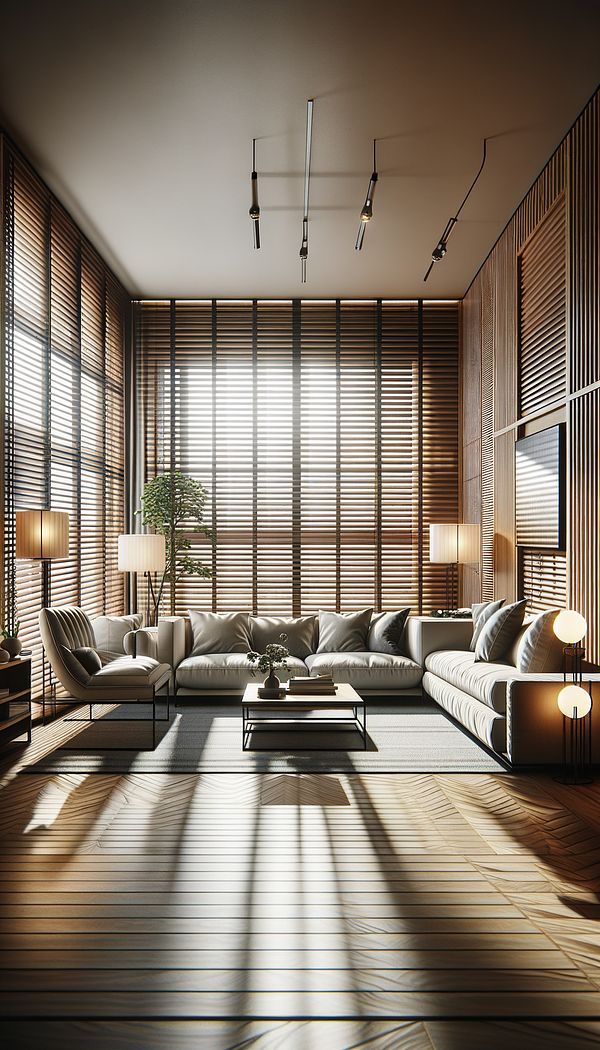What is Blinds?
Blinds are a window covering made from slats or vanes that can be adjusted to control light and privacy.
Description
Blinds are a functional and stylish window treatment choice for any interior space, offering both light control and privacy. They consist of vertical or horizontal slats, also known as vanes, which can be made from a variety of materials including wood, metal, plastic, or fabric. These slats can be tilted, opened, or closed either manually or, in more advanced models, through remote-control operation to adjust the amount of light entering the room.
Blinds are distinguished from shades by their slatted design, which allows for more precise control over light and visibility. While shades are made from one piece of material that either rolls or folds up, blinds have multiple slats that can be adjusted individually. This makes blinds an excellent option for optimizing natural light and maintaining privacy. Additionally, blinds can come in a range of styles, colors, and finishes, making them as much a decorative element as a functional one.
Installing blinds can significantly improve a room’s comfort and aesthetics. Aside from their practical application in controlling light and privacy, blinds can also add texture and depth to a room's design. They can complement the interior theme, whether one is aiming for a modern, minimalist look or a more classic, traditional aesthetic.
Usage
Blinds are commonly used in residential homes and commercial spaces alike, to provide privacy and light control in windows of varying sizes. They can be seen in living rooms, bedrooms, offices, and kitchens, among other spaces. Their versatility in material and design allows them to be tailored to fit the interior design scheme of almost any room.
FAQs
-
What materials are blinds made of?
Blinds can be made of wood, metal, plastic, or fabric, each offering different aesthetic and functional properties.
-
How can blinds be operated?
Blinds can be operated manually by pulling a cord or twisting a wand, and more advanced models can be controlled remotely using remote controls or smart home systems.
-
What is the difference between blinds and shades?
The main difference lies in their construction; blinds consist of slats or vanes for more precise light control, whereas shades are made from a single piece of material.
-
Can blinds help with energy efficiency?
Yes, certain types of blinds, especially those with insulative properties, can help in reducing heat gain during summer and heat loss during winter, contributing to energy efficiency.
-
Are blinds suitable for all windows?
Blinds can be tailored to fit most window sizes and shapes but might not be the best choice for very uniquely shaped windows or for spaces requiring complete blackout conditions.
-
How do I choose the right blinds for my space?
Consider the room’s function, window size and shape, interior décor style, desired level of light control and privacy, and the material and color of the blinds to complement your space.
Practical Application
When selecting blinds, consider both the aesthetic and functional needs of your space. Measure your windows accurately to ensure a proper fit, and choose a material and style that complements your interior design while fulfilling your requirements for light control and privacy. Regular maintenance, such as dusting and occasional washing (for certain materials), will keep your blinds looking fresh and operating smoothly.
-
Antique SatinAntique satin is a type of woven fabric known for its glossy surface and dull back.
-
GinghamGingham is a medium-weight, balanced plain-woven fabric made from dyed cotton or cotton-blend yarn.
-
Rod PocketA rod pocket is a fabric pocket along the top of curtains or draperies through which a curtain rod is inserted.
-
VitrineA vitrine is a glass display cabinet designed to showcase and protect objects or collections.
-
ToileToile is a fabric that features a detailed scenic pattern printed on it.
